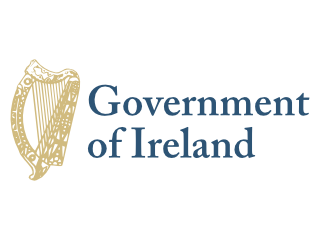Celtic tribes arrived on the island between 600 and 150 B.C. Invasions by Norsemen that began in the late 8th century were finally ended when King Brian BORU defeated the Danes in 1014. Norman invasions began in the 12th century and set off more than seven centuries of Anglo-Irish struggle marked by fierce rebellions and harsh repressions. The Irish famine of the mid-19th century saw the population of the island drop by one third through starvation and emigration. For more than a century after that the population of the island continued to fall only to begin growing again in the 1960s. Over the last 50 years, Ireland's high birthrate has made it demographically one of the youngest populations in the EU. The modern Irish state traces its origins to the failed 1916 Easter Monday Uprising that touched off several years of guerrilla warfare resulting in independence from the UK in 1921 for 26 southern counties; six northern (Ulster) counties remained part of the UK. Unresolved issues in Northern Ireland erupted into years of violence known as the "Troubles" that began in the 1960s. The Government of Ireland was part of a process along with the UK and US Governments that helped broker what is known as The Good Friday Agreement in Northern Ireland in 1998. This initiated a new phase of cooperation between the Irish and British Governments. Ireland was neutral in World War II and continues its policy of military neutrality. Ireland joined the European Community in 1973 and the euro-zone currency union in 1999. The economic boom years of the Celtic Tiger (1995-2007) saw rapid economic growth, which came to an abrupt end in 2008 with the meltdown of the Irish banking system. Today the economy is recovering, fueled by large and growing foreign direct investment, especially from US multi-nationals.
Ireland is a parliamentary republic.
Source: CIA World Factbook
Members:
Resources
Displaying 51 - 55 of 137Planning and Development (Amendment) Regulations 2008 (S.I. No. 256 of 2008).
These Regulations amend the Planning and Development Regulations 2001 in article 9 to provide for the reinstatement of an exempted development for the purposes of the Planning and Development Act, 2000 where an appropriate assessment has been concluded satisfactorily. The exemption concerns any operation or activity in respect of which a Minister of the Government has granted consent or approval in accordance with the requirements of regulation 31 of the European Communities (Natural Habitats) Regulations, 1997.
European Communities (Good Agricultural Practice for Protection of Waters) Regulations 2010 (S.I. No. 610 of 2010).
These Regulations provide, for purposes of implementation of the give effect to Irelands Second Nitrates Action Programme, rules relative to good agricultural practice to protect waters against pollution from agricultural sources and prescribe measures for these purposes, including: periods when land application of fertilizers is prohibited; limits on the land application of fertilizers; storage requirements for livestock manure; and monitoring of the effectiveness of the measures in terms of agricultural practice and impact on water quality.
Land and Conveyancing Law Reform Act 2009 (Section 108) Regulations 2010 (S.I. No. 655 of 2010).
These Regulations prescribe the rate of commission that a receiver may retain as remuneration and to cover costs incurred for services rendered for purposes of section 108 of the Land and Conveyancing Law Reform Act 2009. Section 108 provides for the mortgagee’s statutory power to appoint a receiver.
Implements: Land and Conveyancing Law Reform Act 2009 (No. 27 of 2009). (2009-07-21)
European Union (Environmental Impact Assessment and Habitats) Regulations 2015 (S.I. No. 301 of 2015).
These Regulations amend the Planning and Development Act, 2000 in section 261A, which was inserted in that Act by section 75 Planning and Development (Amendment) Act 2010. The section concerns the approval of quarries in protected areas and relative environmental impact assessment.
Implements: Planning and Development Act, 2000 (Act No. 30 of 2000). (2000-08-28)
European Union (Environmental Impact Assessment and Habitats)(No. 2) Regulations 2015 (S.I. No. 320 of 2015).
These Regulations amend the Planning and Development Act, 2000 in provisions concerning, among other things: substitute consent; approval of quarries in protected areas and relative environmental impact assessment; decision of Board on whether to grant leave to apply for substitute consent; application for substitute consent; remedial environmental impact statement; remedial Natura impact statement.
Amends: Planning and Development Act, 2000 (Act No. 30 of 2000). (2000-08-28)


